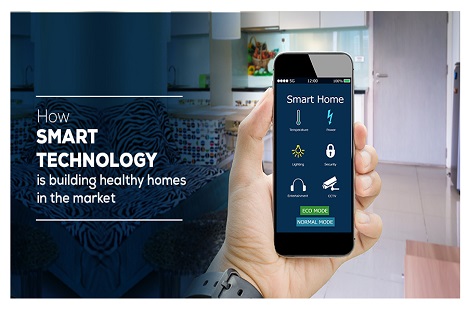A home is the most loved possession of any individual. Owning a property means a lot for an individual, family, and society. But nowadays, apart from just getting the ownership of a home, individuals are looking for a smart and healthy home.
Does a smart and healthy home even exist in the market?
Some years ago there was no such thing as a “healthy” or “smart” home. Since then the real estate sector has adapted this thriving demand of the homebuyers to live in a healthy and smart home. By incorporating multiple technologies, builders and developers have broadened their vision in fulfilling that demand. With a complete understanding of the smart house paradigm and essence of every healthy living.
The Emergence Of Smart technology
In the past couple of years, innovation has taken over the housing paradigm in every way possible be it security, communication, or the occupant’s lifestyle. With technology that measures the overall health of your home such as HHQ, it has made occupants decide to buy a home after knowing if the home is healthy or not. Other advanced technologies such as indoor environmental quality (IEQ) monitors, air purifiers, etc that help individuals with their health and wellbeing information on their devices.
Smart Technology In Building Healthy Homes
Real estate has been the developing market in the world, but with overcoming every pedestal in its way the real estate sector has shown its true compatibility. With building healthy homes, real estate will overcome one more important fundamental toward the livelihood of the people. The emergence is just recently due to the pandemic caused by COVID 19, but what should we expect from it?
Builders and developers should foresee the impact of future events and build according to changing lifestyles:
- Use of robust, low maintenance, low emission, and resource-efficient elements to build the core infrastructure.
- Enable noise, good sound insulation and good surrounding to promote quiet and tranquil home environments.
- Use of active design with walkable neighborhoods that reduces pollution and improves physical activity that encourages walking and cycling.
- Homes with larger windows that admit more daylight and maximize views out with natural ventilation opportunities.
- Diversified spaces for everyday activities such as cooking, sleeping, resting, etc.
- Close Connectivity and access to services, transport, and other people form housing surroundings.
- Enabling smart home functions in terms of safety and security.
- Use materials to avoid moisture, mold growth, and pollutant build-up within the home.
- Provide a setting for focused work, privacy, thinking, relaxation, and reflection.
- Living space with stimulating environments for social engagement and play.
- Optimized with access to daylight and sunlight with well-designed subsidiary electric lighting.
- Occupants health and wellbeing, building and neighborhood design, and consideration of fluctuating future needs.
- Surrounded by green spaces that are dense and well-maintained to maintain fresh air and calm mental health.
- Co-working spaces in proximity to enable an individual’s work-life balance.
- Sustainable drainage systems and penetrable surfaces to alleviate flood risk.
Whilst real estate professionals may not have enough knowledge or direct control of the changing dynamic of health and wellbeing. Undertaking the awareness of healthy homes makes them occupant oriented and how vital it is for them to build a healthy home with smart technology. With the emergence of HHQ, It seems that a certain point has been reached in the evolving markets of smart housing and a new direction for the real estate sector.


